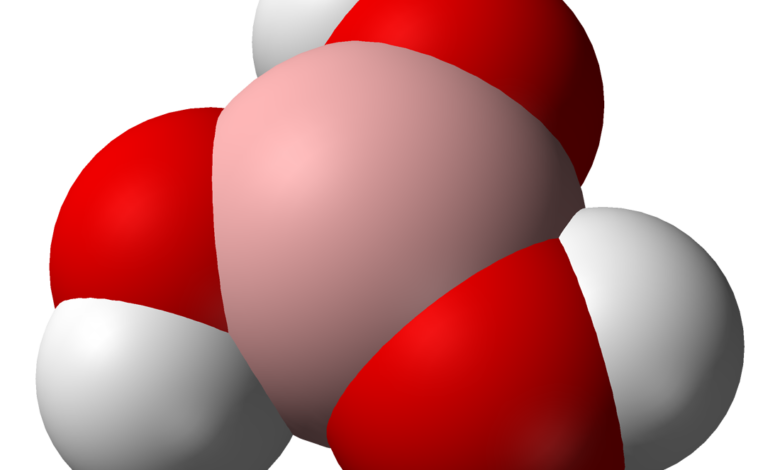Important Properties and Uses of Boric Acid and Phosphoric Acid

Boric acid and phosphoric acid are both weak acids that have many industrial applications. Some important properties and uses of boric acid and phosphoric acid are provided in this article.

Boric Acid
Boric acid, also known as orthoboric acid and hydrogen borate, is a weak acid with the chemical formula H3BO3. This compound can be regarded as a monobasic Lewis acid of boron. It is important to note, however, that boric acid can exhibit the behavior of a tribasic acid as per the Bronsted-Lowry definition of acids and bases. The primary applications of boric acid are as an insecticide, as an antiseptic, as a flame retardant, and as a precursor to several commercially important chemical compounds.
Properties of Boric Acid
- The molar mass of boric acid is 61.83 grams per mole.
- Under standard conditions for temperature and pressure (often abbreviated to STP), boric acid exists as a white crystalline solid.
- The density of boric acid (at STP) is approximately equal to 1.435 grams per cubic centimeter.
- The melting point of boric acid is equal to 170.9 degrees Celsius (or 444 Kelvin).
- The melting point of boric acid is equal to 300 degrees Celsius (or 573 Kelvin).
- Boric acid is not very soluble in water. At a temperature of zero degrees Celsius, the solubility of this compound in water is roughly equal to 25.2 grams per liter. However, at 25 degrees Celsius, the solubility of boric acid in water is 57 grams per liter.
- Boric acid is moderately soluble in pyridine and very slightly soluble in acetone.
Uses of Boric Acid
- Boric acid is used in the manufacture of textile fiberglass.
- It is also used in the manufacture of the glass used in liquid crystal displays.
- Another important application of boric acid is in the process of electroplating.
- Blacksmiths often use a mixture of borax and boric acid as a welding flux.
- Boric acid is also used as an antiseptic for the treatment of minor burns and cuts.

Phosphoric Acid
Phosphoric acid (sometimes referred to as orthophosphoric acid) is a chemical compound with the formula H3PO4. It is a weak acid that exists in its pure form as a colorless solid. However, phosphoric acid is usually found as a syrup with an 85% concentration of H3PO4 and a 15% concentration of water.
Properties of Phosphoric Acid
- The molar mass of phosphoric acid is 97.994 grams per mole.
- The density of this compound is roughly equal to 1.834 grams per cubic centimeter in its solid form at STP.
- The melting point of phosphoric acid is known to range from 40 degrees Celsius to 42.4 degrees Celsius.
- Phosphoric acid has a boiling point of roughly 212 degrees Celsius.
- This compound is highly soluble in water. H3PO4 is also soluble in ethanol.
Uses of Phosphoric Acid
- The primary application of phosphoric acid is in the production of fertilizers.
- This compound is also used in anti-rust treatments of metals.
- Phosphoric acid is a vital component of phosphoric acid fuel cells (often abbreviated to PAFC)
For More Article’s visit This Site.






